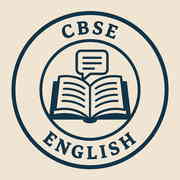Professional Courses
Industry-relevant training in Business, Technology, and Design
Categories
Interactive Games
Fun games to boost memory, math, typing, and English skills
Typing
Memory
Math
English Adventures
Knowledge

CBSE 8 English
This module focuses on enhancing spoken English, revising grammar comprehensively, and preparing students for their examinations. It emphasizes effective communication skills, proper grammar usage, and advanced writing techniques while providing structured practice activities and mock exams. These components are designed to foster lifelong learning and encourage positive study habits.
Course Chapters
Module 1: Foundation Skills & Introduction to Literature
The reading journey for Grade 8 English is centered around understanding the syllabus, refining reading skills, and mastering grammar. It highlights the importance of two main textbooks while emphasizing the need to be proficient in reading, writing, grammar, and speaking. Strategies for reading comprehension are also provided to help students excel in understanding unseen passages.
Module 2: Honeydew - Prose Deep Dive (Part 1)
The module dives into poignant narratives from the Honeydew textbook, exploring human experiences associated with themes of hope, resilience, and the impact of historical events. The analysis begins with a moving account from World War I, transitions into the devastating 2004 Indian Ocean Tsunami, and finishes with reflections on colonial history leading up to India's First War of Independence in 1857, highlighting personal stories that encapsulate broader societal shifts.
Module 3: Honeydew - Poetry & Prose (Part 2)
The module dives deep into literary artistry with two captivating poems and two prose chapters, exploring themes of human experience and moral lessons. Through the analysis of 'The Ant and the Cricket' and 'Bepin Choudhury’s Lapse of Memory', distinct messages about preparation, memory, and identity are revealed. Furthermore, the principles of grammar, particularly modals, are examined to enhance language efficacy and expression.
Module 4: It So Happened - Supplementary Reader (Part 1)
The module explores engaging stories that impart moral lessons and shed light on social issues. Key narratives include the whimsical fable of 'How the Camel Got His Hump,' which emphasizes work ethic and responsibility, the harsh realities of child labor illustrated in 'Children at Work,' and the transformative power of love and compassion depicted in 'The Selfish Giant.' Each story encourages readers to reflect on important themes such as cooperation, empathy, and the consequences of one's actions.
Module 5: Grammar Essentials & Sentence Structure
This module covers essential grammar principles that enhance sentence construction, focusing on specific aspects such as subject-verb agreement, direct and indirect speech, and the role of determiners and articles. The importance of well-structured sentences is emphasized, showcasing how grammatical accuracy facilitates effective communication and comprehension. Additionally, the module details types of clauses and sentence structures that aid in forming coherent sentences.
Module 6: Honeydew - Prose & Poetry (Part 3)
The chapter explores human emotions through three stories: Jody's compassionate pursuit to care for an orphaned fawn, Hawking and Kanga's dialogue on disability and perseverance, and Bond's vivid account of the monsoon season. Each narrative underscores themes of empathy, responsibility, and the resilience of the human spirit in the face of adversity.
Module 7: It So Happened - Supplementary Reader (Part 2)
The narratives explored in this module, particularly 'The Treasure Within' and 'Princess September', delve into unconventional views of intelligence and happiness, respectively. They emphasize the value of recognizing diverse intelligences beyond academic achievement and the importance of freedom for true contentment. The chapter concludes with an exploration of conflict resolution through unexpected friendships in 'The Fight', revealing how common interests can transform adversities into alliances.
Module 8: Formal Writing & Advanced Grammar
The module focuses on enhancing formal writing skills across various genres, including letters, notices, messages, story writing, essay writing, and paragraph development. Emphasis is placed on understanding the structure, tone, and essential elements of each type of writing to communicate effectively. Students are equipped with practical exercises to develop their skills in concise and coherent communication.
Module 9: Honeydew & It So Happened - Final Chapters & Revision
The module explores profound themes of destiny, freedom, and moral choices through a selection of stories and poems. It highlights the journey of characters seeking self-fulfillment, the philosophical pondering on happiness and power, and the critique of formal education. The analysis emphasizes character development and the essence of true greatness as found within oneself rather than in external ideals.
Module 10: Exam Preparation, Spoken English & Review
This module focuses on enhancing spoken English, revising grammar comprehensively, and preparing students for their examinations. It emphasizes effective communication skills, proper grammar usage, and advanced writing techniques while providing structured practice activities and mock exams. These components are designed to foster lifelong learning and encourage positive study habits.
